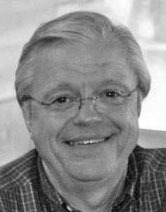“I have great respect for the past. If you don’t know where you’ve come from, you don’t know where you’re going.” — Maya Angelou
I’ve been looking back through tons of archived yellowing newsprint for the last year or more. Perusing things I’ve written in preparation for authoring a collection of my work for posterity. Or for my kids, at least. And, the strangest thing has been happening.
The more I do it, the more I meet the person who started all this.
For instance, consider this piece penned Dec. 4, 1975, and published in The Naples Monitor. One that I had long forgotten about.
“Every county has an abundance of old cemeteries and Morris County is no exception. Cemeteries rich in history, sentiment and knowledge. Most of it not recorded anywhere outside of weathering marble that is all too often crumbling and surrounded by overgrown grass and weeds.”
That intro paragraph evoked memories of my mother and her sisters combing Kentucky cemeteries every summer during family reunions. Hot summers driving miles to graveyards on hillsides and behind country churches. Time that, as a kid, I preferred to have been splashing in a mountain stream somewhere close to a picnic lunch rather than helping them rub on aged markers trying to make out the dates.
“Besides being the final resting place for the earthly remains of relatives, friends and loved ones, old country cemeteries reflect a lot about us,” I wrote. “Public cemeteries are, relatively speaking, something of recent times. Before becoming the ‘here today and there tomorrow’ mobile society that moves every few years we are today, people were often born, lived and died in the same area, if not the same parcel of land.”
To wit, about the same time this 1975 missive appeared in print, I was standing at the parts department counter at Sandlin Chevrolet and Oldsmobile on Mount Pleasant’s north side. The same place where the business established in 1937 still sits today.
A sign a couple hundred yards north of there on U.S. 271 North declared the tiny burg of Talco to be 17 miles away.
While I waited for my order to be filled, an older gentleman came in looking for a part for his aging Chevy truck, announcing he had just come from Talco. As Alvie Neely or “Cotton” Huff, both of whom worked there at the time, disappeared in the back to retrieve what they needed, the old guy gazed out the window at the 271 and U.S. 67 intersection in front of the dealership.
“This north end of Mount Pleasant sure has changed since the last time I was down here,” he drawled.
“Really?” I asked him. “How long’s it been since you ventured over from Talco?” I added, just to make conversation while we both waited.
He thought for a minute before replying.
“Near about 17 years. I don’t get far from the farm very often,” he laughed.
“Hence,” my 49-year-old column continued, “most families had their own cemetery where family members were buried.”
Like the Kentucky mountaintop property where my mom’s great-grandparents were born, lived, died and were buried. A hike that required wading a river up to that plot one summer in the 1980s that led to a small family cemetery with Johnson tombstones bearing dates in the 1700s.
“Visits to one of the older plots will often reveal family lineage bearing birth and death dates etched in stone; some with a line of wit, wisdom or philosophy inferring that the one interred is ‘gone but not forgotten’ or is ‘waiting for us on the side.’
“Other times, associations formed by the departed are recorded, such as military records from recent skirmishes to the Civil War or earlier. Here in the South, the inscription C.S.A. is common on old markers noting the person had served in the military for the Confederate States of America. Others often honored membership in a brotherhood or a lodge.”
Also common on older markers is the deceased’s cause of death. Particularly if it was some sort of plague or pestilence that robbed families and communities of multiple members.
While all of this enlightenment tells us much about the departed person while still among the living, a glance around the local Boot Hill can also offer much about the living before they became cemetery residents.
Sometimes, ref lecting our consideration for those we are related to or maybe befriended … after they are gone. Learning more about ourselves by taking a closer look at our cemeteries.
Or, for me, reading what I wrote a lifetime ago revealing more about how I write today.

.png)







